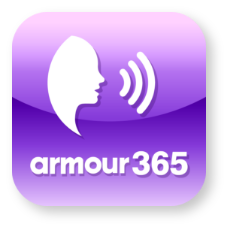What is Conversational Marketing
Conversational marketing uses chatbots, voice bots, and other forms of artificial intelligence (AI) such as across communication channels to provide customer service with minimal or no human involvement. Conversational marketing can be done using both humans and bots, but the current trend is toward using bots to scale up the process.
Conversational marketing is a more effective way to engage customers. It’s more efficient than live agents. For example, companies historically had live agents available 24/7 to answer questions from customers. However, this method was inefficient because there wasn’t enough time for an agent to answer every question thoroughly. Also, context was often lost when a case was transferred from one agent to another.
In contrast, conversational marketing allows businesses to offer personalized customer service by processing data about their customers’ past interactions and preferences through AI technology. This eliminates the need for human agents who are always available, can quickly analyze each customer’s needs, and offer an appropriate solution.
Types of Conversational Marketing
Conversational marketing is a specific kind of marketing that uses conversational interfaces and chatbots to interact with consumers in real-time. This engagement allows businesses to establish relationships with their customers, create brand awareness, and generate leads—all while saving money on traditional advertising campaigns.
There are three types of conversational marketing: live chat, chatbots, and voice assistants.
Live Chats
Live chats are a great way to answer customer questions, but they can also be used as an opportunity to engage with customers and build your brand. You can use live chatbots or human agents in real-time, depending on the nature of your business.
It’s an excellent way to get feedback from consumers, too! If you’re looking for feedback on products or services that you provide, live chats are perfect for this purpose—they allow users who may not have had the chance before now access their opinion directly through text messaging or video chatting.
Chatbots
A chatbot is a software program used to interact with users via text, voice, or video. These programs aim to mimic humans’ behavior to make customer service easier and more efficient. There are many different types of chatbots, including:
- Conversational Marketing: This type of marketing uses AI to deliver personalized messages based on what you’ve purchased before or other factors like location or gender (for example). It can also use conversational data from your past interactions with retailers and brands to provide better recommendations than what would generally be available through traditional forms like email campaigns or Facebook ads targeting specific audiences.
- Chatbots for Businesses: These are similar but explicitly focused on helping businesses improve their efficiency by automating tasks like scheduling meetings, processing invoices, etc.
Voice Assistants
Voice assistants are the most used channel for conversational marketing, and they’re available on mobile devices and smart speakers. Using voice assistants to answer questions or perform tasks makes them so powerful in conversational marketing.
Voice assistants can understand natural language, meaning they can know what you’re saying when you say it in a way that sounds like normal conversation (for example: “I’d like some ice cream”). This helps reduce the barrier between brands and consumers because people will feel more comfortable interacting with a brand if they know how much time they have until they need to respond or complete another action.
Steps to Implementing a Conversational Growth Strategy
The first step to implementing a conversational marketing strategy is to pick the right tool. Several options are available, but you should choose one that fits your needs and budget. Once you’ve selected a tool, it’s time to segment your audience and plan their conversation flow.
You’ll want to personalize every message sent out so that each note feels unique and relevant to each subscriber; this will increase customer engagement and shorten sales cycles because leads know precisely what they need from their conversations with brands before making purchases in person or online.
Pick the Right Tool/Channel
If you’re new to conversational marketing, it can be tempting to try out every tool. But if you have a small business or aren’t sure what the best tool for your brand is, it might be better to start with something simple that doesn’t require a lot of setup and maintenance.
Segment your Audience
To segment your audience, you need to consider the following:
Demographics, psychographics, and behavior. These three aspects of an individual’s identity can be used to simplify the process of segmenting your audience. For example, if you want to target a particular demographic—such as anyone over 65—you could use age as your crucial indicator for creating a profile for each individual who falls into this category.
You could also define psychographic traits such as income level or education level based on previous research into what represents those groups’ interests and behaviors online. Finally, behavioral patterns may help explain how people behave online (e.g., whether they’re active on social media or not). This information will help guide decisions about which channels/devices/types of content are best suited for reaching these audiences with relevant messages at different times during the day/week/month. Thus ensuring maximum reach across all points within their day-to-day lives, not only when browsing Facebook but also when they’re listening through Spotify while cooking dinner!
Plan your Conversation Flow
The first step to planning a conversation is to define its goal. What’s your objective? What are you trying to accomplish with this conversation?
Next, define the flow of messages that will take place during the entire process: who will start it, how long they’ll be allowed (or not) and when they’ll be done. Once all that has been defined, break down each message into its parts so that they can be easily understood by people in different positions within your organization or industry.
Finally, decide what type of conversations these should fall under—email campaigns, social media posts, or phone calls—and assign them accordingly.
Personalize Conversations
Personalization is a critical element of conversational marketing. It can be achieved through a variety of methods:
- Segmentation: Personalization is not just about the single channel but about creating a tailor-made experience for each customer. This requires segmenting your audience based on their motivations and interests so that you can tailor your content accordingly.
- Machine learning algorithms: Machine learning has been used extensively by Netflix to identify what movies subscribers want to watch next—and then send them those movies at the perfect time! By using machine learning techniques like natural language processing (NLP) and deep learning algorithms, companies can analyze user interactions to determine which messages are most effective at attracting new customers or boosting retention rates among existing ones.
Guide Your Leads to the Consideration Stage
Once you’ve got your leads to the consideration stage, it’s time to move them from one stage of the sales funnel to another. One of the best ways to do this is by using a conversational marketing platform that allows for real-time interactions between buyers and sellers. This enables you to guide leads through each step of their journey—from initial contact through closing—and get them from one stage of the sales funnel into another more quickly and efficiently than before.
How to Analyse Conversational Marketing Efforts
To determine the effectiveness of your conversational marketing efforts, you’ll need to analyze what happens in the tool itself.
- Use a conversational marketing platform that has an AI engine built into it. This will allow you to track all activities, identify specific interactions, and which customers are most likely to respond positively or negatively based on their behavior patterns.
- If you want more granular data about how people interact with your brand via chatbot, use a chatbot tool with voice assistant capabilities (i.e., Google Assistant). This allows for deeper insights into what people say about your product/service and why they tell it in particular.
Increased Customer Engagement
Conversational marketing is a great way to increase customer engagement. It helps you connect with customers on a more personal level, which can help them feel like they’re part of your brand and make them feel more loyal.
Conversational marketing also increases customer retention because it makes customers feel like their company hears them—and that their voice matters. This leads to increased satisfaction, loyalty, advocacy for the company or brand, and an overall better experience.
It is expected that by 2023, chatbots will handle $112 Billion worth ecommerce transactions!
Shorter Sales Cycle
Conversational marketing can help you shorten your sales cycle by providing more information and customer interaction. It allows you to engage with them more personally, making them feel more comfortable buying from you.
For instance, if someone is interested in buying a product but doesn’t know precisely what they need or how much it costs, conversational marketing will allow them to ask questions about those things immediately to make an informed purchase decision.
The chat logs can also provide useful data for qualifying leads – this would help sales personnel to focus on the right prospects.
Improved Customer Experience
Conversational marketing is about improving the customer experience. It’s about helping your customers get help with their problems, find information about your company and products, or get information about services and industry news. This enables you to establish a strong connection with consumers, so they become loyal advocates for your brand.
In addition to improving the overall quality of interactions between businesses and potential customers on social media platforms like Twitter or Instagram, conversational marketing also helps build trust by giving people insight into how companies work behind-the-scenes—and vice versa.
While some naysayers still believe that “the human touch” is mission critical for customer experience – the survey results speak differently: 40% of customers don’t care if they are being helped by a human or a BOT. Also 67% of customers have used chatbot customer support during the past year.
Lower Customer Acquisition Cost
You can use conversational marketing to lower customer acquisition costs, the amount of money a business spends to acquire a customer. It is estimated that using chatbots help lower CAC by upto 30%. A lower CAC means you can charge higher prices and make more money without losing many customers.
The key here is increasing your customer lifetime value (CLV). CLV refers to the amount of money customers spend with your company over their lifetime instead of just one purchase or transaction. CLV considers how much time these customers will spend on other products/services from you.
It’s not just about whether or not they buy from you again; it also includes all those things like referrals and recommendations made by current customers who love what we do for them! In other words: if someone buys something from us once but then uses our service regularly (and maybe even gives us referrals), then all those additional interactions add up over time—and that’s where we get our increased revenue!
Scale your Conversational Marketing with Gnani’s full suite of products and solutions
Gnani has some of the most cutting edge products and solutions for scaling your conversational marketing efforts using AI.
Some of the most popular solutions are:
You don’t need your sales team to waste effort on cold leads. Using our lead qualification bots you can enrich & qualify your leads and help your sales team focus on the right opportunities.
Product recommendations is another common use case that we serve. Using our product recommendation bots you can guide your site visitors to make a purchase or increase a shoppers cart value by showing them the correct cross-sell and up-sell products.
Frequently Asked Questions
What is an example of conversational marketing?
Ans: Live chat and chatbots are the first things that come to mind regarding conversational marketing.
Why is conversational marketing important?
Ans: Conversational marketing is based on one-to-one interactions in real-time across multiple channels. It enables you to foster customer relationships and improve your online customer experience by communicating and customizing interactions online.
What is a conversational marketing platform?
Ans: Conversational marketing software, also known as messenger marketing software, engages potential customers with personalized, one-on-one conversations en route to specific product recommendations or offers.
What is a conversational marketing manager?
Ans: Chances are you are experienced in conversational marketing. It engages customers in a personalized, two-way conversation to better understand and serve their needs. These days, savvy marketers and businesses are getting more proactive in lead generation and sales.





